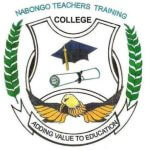Introduction
The launch of Junior Secondary Schools in Kenya is a major step forward for the country’s education system, and a key opportunity to improve the quality of education available to students. For years, Kenya has struggled with a shortage of qualified teachers, inadequate resources, and limited access to quality secondary education. By introducing Junior Secondary Schools, the government is taking a proactive approach to addressing these challenges and creating a better future for students across the country.
Overview of the Junior Secondary School Program
The Junior Secondary School program is designed to provide students with a strong foundation in core subjects such as mathematics, science, social studies, and language arts, while also introducing them to new areas of study and helping them develop essential skills such as critical thinking, problem-solving, and communication. The program typically lasts for three years, and is aimed at students in grades 7-9. In addition to classroom instruction, students may have the opportunity to participate in extracurricular activities such as sports, music, or community service projects.
Benefits of Junior Secondary Schools
Research has shown that students who participate in Junior Secondary School programs are more likely to perform well academically, stay in school longer, and have better prospects for future employment and higher education. By providing students with a strong foundation in core subjects and helping them develop essential skills, Junior Secondary Schools can prepare them for the challenges of high school and beyond. Additionally, the program can help to promote greater social inclusion and equity, by providing all students with access to quality education regardless of their background or circumstances.
Launch of Junior Secondary Schools in Kenya
The launch of Junior Secondary Schools in Kenya was a major undertaking, involving the opening of hundreds of new schools across the country and the recruitment and training of thousands of new teachers. The launch was supported by the government, as well as by private organizations such as Nabongo Colleges and Schools, which provided resources and expertise to help ensure the success of the program. Despite some initial challenges and logistical issues, the launch of Junior Secondary Schools in Kenya was widely seen as a major step forward for the country’s education system.
Future Plans for Junior Secondary Schools in Kenya
Looking ahead, there are many opportunities for the Junior Secondary School program to continue to expand and improve in Kenya. The government has committed to investing in teacher training and professional development, as well as in new resources and facilities for schools. Nabongo Colleges and Schools is also planning to support the program through initiatives such as teacher mentorship programs, student scholarships, and community outreach. With continued support and commitment from all stakeholders, the Junior Secondary School program in Kenya has the potential to transform the lives of students and communities across the country.
Conclusion
The launch of Junior Secondary Schools in Kenya represents a major milestone in the ongoing efforts to improve the quality of education in the country. By providing students with access to quality instruction and resources, as well as opportunities for growth and development, the Junior Secondary School program can help to create a brighter future for all Kenyan students. As Nabongo Colleges and Schools continues to support the program, we look forward to seeing the positive impact it will have on the lives of students and communities across the country.
